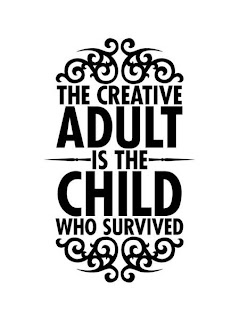 |
| 'I was appointed for a purpose!" |
The
Secretary of Education Ms Lesley Longstone, in presenting her report on
education, states that New Zealand does not have top performing education
system because far too many students leave with little to show for their
attendance. She refers to Maori and Pacifica and special needs students in
particular.
Appointed by the current government Ms Longstone seems dedicated to pushing the government’s agenda by developing a need for other means of educational provision – the privatisation of learning. Ms Longstone previous experience was as an
educational manager in the UK with responsibility for introducing ‘free’
schools – in New Zealand charter schools.
As an aside ‘free schools’ in the UK and
charter schools in the US have shown little success.
That New
Zealand ranks in the top echelon in international benchmarks is conveniently ignored by Ms
Longstone. Ironically both the UK and the US, countries leading the educational
privatisation agenda, do not rate at all.
This, as
mentioned, is more about a privatisation agenda than an educational one.
Unfortunately
the responses from teachers unions are predictably defensive but agree that
improvement is necessary for ‘failing’ students.
The simple fact is that our current education ‘system’, with its genesis in the pastindustrial age, is in dire need of transformation. The current government’s solution is improve the situation by imposing standards enabling comparison and competition between schools. As an approach this, as in other countries, will result in a narrowing
of the curriculum, teaching to the tests and the side-lining of creativity but
is vital to achieve the business/privatisation agenda by providng doubtful data for parents to make
‘informed’ choices.
Rather than
defending the status quo it is time to consider the 'shape' of education needed
to provide students with the dispositions and skills to thrive in increasingly
uncertain and unpredictable times. Rather than standardising, testing, and
sorting students what is now required is the personalisation of learning;
learning tailored to the needs of individual students; an education predicted
on developing every students talents and gifts.
 |
| Something wrong with our industrial age system! |
Such a
personalisation of learning is the key to ensuring equity in education.
 |
| Time to celebrate differences |
Personalisation is not a new concept and is seen in the way the very young learn. In the
formal education system it is best seen in early education provision and early
primary but is side-lined as students move through schooling until. By
secondary schooling, education is largely standardised – ‘one size fits all’ –
students graded by ability and increasingly contributing to the failing of the
students Ms Longstone is concerned about. The ‘one in five students failing’
mantra repeated endlessly the Minister of Education Ms Parata. The current
system ends up by being successful only for the academic students.
At this
point I join the ‘schools are failing’ critics but the solution I back is
personalisation rather than standardisation or privatisation.
Years ago I
read that Honda (of Honda cars) said that every problem needed three or four
why questions to be asked.
The problem seems why it is that Maori, Pacifica and students with special needs fail to engage in the current school system?
The problem seems why it is that Maori, Pacifica and students with special needs fail to engage in the current school system?
Why aren’t
students engaged? Answer: students do not see schooling as relevant and
attendance does more harm than good.
Why don’t
students see school as relevant? The student’s parents, and older siblings,
found their schooling less than fun.
 |
| 1in 5 young live in poverty - 1in 5 failing, ? |
Why are
parents not totally able to be supportive of the students? Many families are finding it
hard to feed and clothe their children; many work long hours at menial jobs for
low pay; and many are unemployed – particularly older siblings. A combination of the above leads to students arriving at school with poor entry skills and lacking the ‘social capital’ other more fortunate students have. Add this to
the fact that 270000 students in New Zealand live below the poverty line. It
doesn’t take much intelligence to see that this fifth of all young people
equates to Ms Parata’s ‘one in five students failing’.
So what
could be done to ensure all students succeed at school?
First there
is a need to clarify the purpose for schooling , the disposition and skills all
students need to thrive in what some are calling a new age of creativity or
ideas – a post-industrial unpredictable
era. Ironically such answers are implicit in the 2007 New Zealand Curriculum
which the current standards agenda has side-lined. UK educationalist Guy Claxton,
in his book ‘What’s The Point of School’ talks about ‘learnacy being as
important as literacy and numeracy while Sir Ken Robinson says schools shouldsee creativity as important as literacy and numeracy.
 |
| Education for standardisation |
Finally
schools need to be developed as community centres providing parent with access
to health facilities. Seeing schools as neighbourhood schools was one of the
unrealised advantages of self-managing schools. Schools need to be seen as the
key to developing democratic values ( see John Dewey) and the empowering of students, teachers
and parents. Every school a ‘charter school’!
 |
| Education to develop talents |
Such
solutions are of course not compatible with the current government’s
privatisation and standardisation ideology. And it moves well away from teacher
organisations defending the status quo only seeing room for improvement.
 |
| Jonn Dewey not Henry Ford |
We now know enough about how people learn that no student need fail but only if we change our collective minds first. The current system is simply not working!
Read what one blogger feels about Ms Longstone's achievement so far!
Read what one blogger feels about Ms Longstone's achievement so far!










.jpg)












